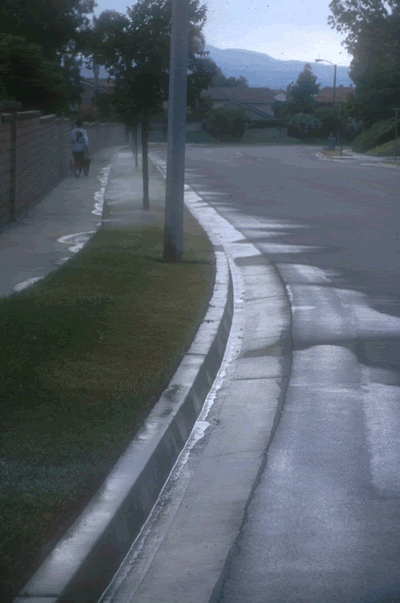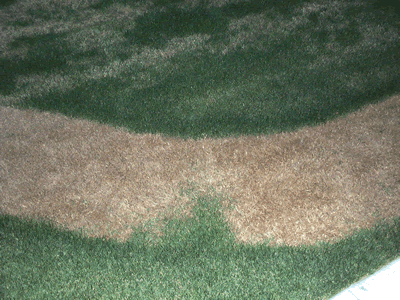Managing Your Landscape During a Drought
The state of Arizona often experiences years of less-than-average rainfall, which signifies a drought. Water resources professionals have developed and implemented plans to accommodate the inevitable abnormally dry periods that occur in the state. Our resources, however, are not limitless, and efficient water management is imperative. Every resident needs to be more aware of their water use. The questions and answers below can help you make responsible choices about landscaping during times of drought.
How can I better manage my landscape during a drought?
First, make sure your irrigation system is working and properly maintained through regular evaluations.
| • | Check and adjust your system on a regular basis. Make sure your water schedule reflects seasonal changes. |
| • | Immediately replace broken or missing emitters and sprinkler heads. |
| • | Know how to shut off the controller when it is raining and where to shut off the outside water supply during an emergency (when a water station will not quit running). |
Second, prioritize landscape water requirements associated with your property’s trees, shrubs, turf areas, and flowerbeds. Assign monetary and functional values to your living landscape:
| • | Give trees a higher watering priority than turf areas and flowerbeds. Most turf areas can tolerate long periods of drought and if damaged can be replanted and will rejuvenate in a matter of months. Trees, however, are more difficult to replace. For example, a 20-year-old tree will take 20 years to replace and may entail significant removal and replanting costs. |
| • | Give functional turf areas a higher irrigation priority. Grass in the back yard nearest the patio should be given first priority. Grass in the front or side yards should be the first to lose water. Consider replacing grass with desert-adapted groundcovers, such as trailing rosemary or acacia. |
How should we manage our landscape’s trees during a drought?
Trees are the single most important living element in a landscape. They require consistent care regardless of conditions, and therefore the highest priority should be on their maintenance and watering:
| • | Check frequently for drought stress. Symptoms of drought injury to trees may appear suddenly or take up to two years to emerge. Take a monthly walk around your property and get to know the characteristics and what to expect seasonally from your plants, especially trees. Look for drought stress symptoms including wilting, yellowing, and browning of leaf edges, scorching, defoliation, and branch-die-back. In a continued drought, leaves may be smaller than normal and drop prematurely. Although drought stress may not kill a tree outright, it could set it up for more serious diseases or insect infestations in following years. |
| • | Water deeply and slowly. Apply water so it moistens the soil in the root zone to a depth of at least 12 inches (the recommended watering depth is 24 to 36 inches.) Overhead spraying of tree leaves is ineffective. |
| • | Apply mulch. A three- to four-inch layer of organic or inorganic mulch on the soil surface helps retain moisture. Apply mulch within the dripline, leaving a six-inch space between the mulch and the tree trunk. |
| • | Prune properly. Prune trees and shrubs only to improve structure and limb stability, and to remove dead and weakened branches. Leaving broken, dead, insect-infested, or diseased branches can further weaken a tree during drought and set it up for secondary insect and disease problems. |
| • | Fertilization. Don’t fertilize a tree that is under drought stress. Fertilizers can stimulate top growth, which results in too much foliage for the root system to maintain during times of drought. Consult a certified arborist with questions. |
How should I manage our turf during a drought?
Maintain the irrigation system for maximum efficiency. Properties should:
| • | Replace broken or missing sprinkler heads. |
| • | Adjust sprinkler heads so they do not throw water onto sidewalks, streets, or patios. |

| • | Check nozzles for plugging. |
| • | Water as infrequently as possible without causing undue stress. Make sure to still water to a depth of at least six inches. |
| • | Avoid fertilization. Be willing to accept a less-than-perfect turf and tolerate a few brown spots or edges. |
| • | Set mowing height at 2 ½ to 3 inches. Don’t remove more than ¾ inch of grass at a single mowing. Use a sharp mower blade. |

Photographer: Kathleen Moore
Scalping grass by mowing it too low stresses the grass and causes it to use more water.
How should I manage flowerbeds during a drought?
Take advantage of the numerous desert-adapted plants that offer seasonal color and attract hummingbirds, such as aloes and penstemons, rather than the usual bedding plants for flowerbeds. Mulch with one to two inches of organic mulch, regardless of drought conditions. This will reduce evaporation and control water-using weeds.
Kent Newland
Water Resources Specialist
City of Phoenix